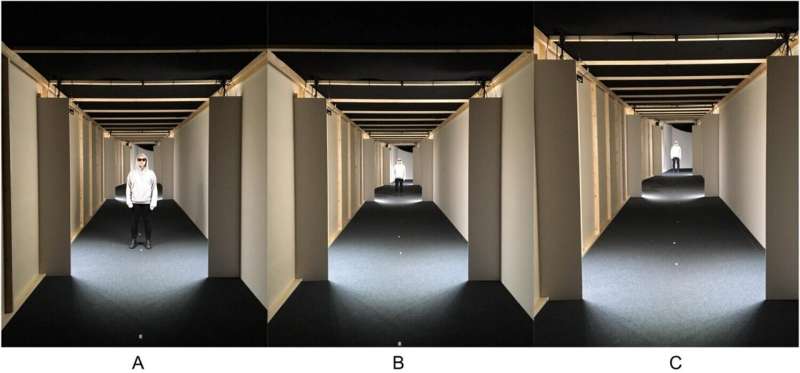This article has been reviewed according to Science X's editorial process and policies. Editors have highlighted the following attributes while ensuring the content's credibility:
fact-checked
proofread
Distance, lighting, facial masking critically affect reliability of eyewitness identification, says study

According to a recent research report, distance, lighting and facial masking are critical factors affecting the reliability of eyewitness identification. Researchers at Åbo Akademi University and New York University Shanghai, in collaboration with the Finnish Science Center Heureka, have studied the effects of these factors on the ability to recognize people at a later time. The research report, published in Psychology, Crime & Law, recommends new factors that the police should consider when investigating eyewitness observations.
This comprehensive study focused on three key factors: distance, lighting and facial masking, and their impact on the ability of eyewitnesses to later correctly identify individuals they had seen. In the study, eyewitnesses were asked to identify perpetrators they had seen from various distances (5, 12.5 or 20 meters) and in different lighting conditions (daylight or deep twilight). The perpetrators were shown both with and without facial masking (sunglasses, hood, or both sunglasses and hood).
The key finding of the study is that distance plays a crucial role—the longer the distance, the harder it is to later identify a person correctly. Moreover, facial masking presents a challenge even in good lighting conditions and at close proximity. Compared to other facial masking methods, sunglasses had the most negative impact on identification accuracy.
"Facial masking has a significant effect on the ability of eyewitnesses to correctly identify a perpetrator. A distance of five meters in clear daylight already presents a substantial challenge for later identifying a perpetrator who was wearing sunglasses. When the distance is 20 meters and the lighting is low (deep twilight), it then becomes so difficult to later identify a perpetrator that facial masking has very little effect.
"If an eyewitness sees a perpetrator wearing sunglasses from a distance of 20 meters, our findings indicate that it is highly unlikely that the eyewitness would be able to correctly identify the perpetrator at a later time," says Thomas J. Nyman, Assistant Professor of Practice in Psychology at New York University Shanghai.
Julia Korkman, Professor of Practice in Legal Psychology at Åbo Akademi University, emphasizes that with over 1,300 participants aged from 5 to 90 years, the study is a unique example of citizen science. This makes the results robust and potentially applicable on a global scale.
"These results mean that we have a better starting point for assessing the value of eyewitness identification in relation to distance, lighting and facial masking," she says.
More information: Thomas J. Nyman et al, The masked villain: the effects of facial masking, distance, lighting, and eyewitness age on eyewitness identification accuracy, Psychology, Crime & Law (2023). DOI: 10.1080/1068316X.2023.2242999
Provided by Åbo Akademi University





















